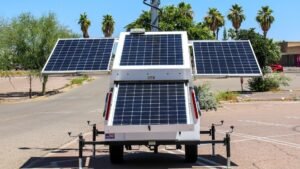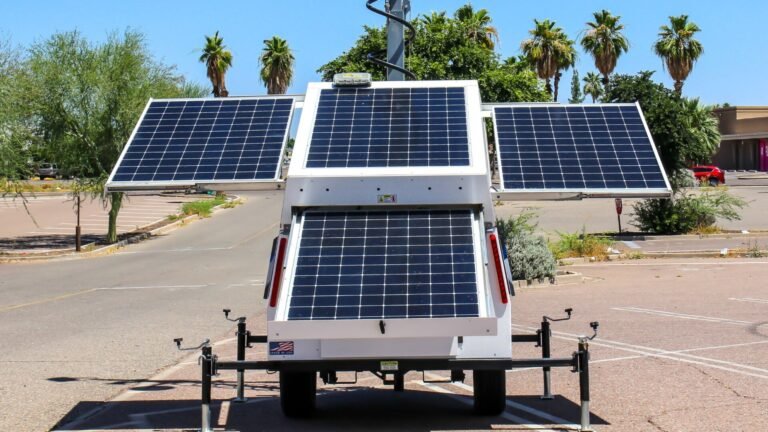In the quest for sustainable energy solutions, the integration of fiber optics technology into solar textiles represents a groundbreaking advancement, marking a new era in the renewable energy and textile industries.
As we march towards a greener future, the fusion of these technologies opens up unprecedented opportunities for harnessing solar energy in everyday life, beyond traditional solar panels.
This innovative approach not only enhances the efficiency of solar energy capture but also expands the usability of textiles in generating clean energy. As a leader in the solar industry, Tamesol recognizes the potential of these advancements and their role in shaping a sustainable future.
This blog delves into the top three recent advancements in fiber optics that have significantly boosted solar textile efficiency, reflecting Tamesol’s commitment to innovation and environmental sustainability.
By exploring these cutting-edge technologies, we underscore the transformative impact they have on both the energy and textile sectors, paving the way for more adaptable and environmentally friendly solar solutions.
1. Photovoltaic Fiber Development
One of the most significant recent advancements in fiber optics for solar textiles is the development of photovoltaic (PV) fibers.
These innovative fibers are designed to convert sunlight into electrical energy, similar to traditional solar panels but with the added flexibility and versatility of textile fibers.
Recent studies have shown that these PV fibers can achieve an energy conversion efficiency of up to 15%, a remarkable feat considering their nascent stage of development.
A notable case study in this field is the project led by researchers at the Massachusetts Institute of Technology (MIT), where solar fibers were integrated into outdoor fabrics, generating enough energy to power small electronic devices.
This breakthrough demonstrates the practical applications and potential scalability of solar textiles in real-world settings.
Looking to the future, the industry anticipates that the efficiency of PV fibers could surpass 20% with ongoing research and development.
This would make solar textiles not only a viable option for low-energy electronics like wearables and sensors but also for larger applications such as power-generating tents or curtains.
The integration of these fibers into everyday items represents a significant step toward ubiquitous, decentralized energy generation, aligning perfectly with Tamesol’s vision for innovative, sustainable solar solutions.
As these technologies evolve, they promise to redefine how and where we can harness solar energy, making it more accessible and integrated into our daily lives than ever before.
2. Enhancement in Light Absorption and Energy Conversion
The second major advancement in the realm of fiber optics for solar textiles is the enhancement of light absorption and energy conversion efficiency.
Traditional solar cells typically convert 15-22% of sunlight into electricity, but recent developments in nanostructured fiber optics have significantly improved these figures.
Researchers have innovated fibers with nanostructures that mimic the natural light absorption of forest canopies, drastically increasing the surface area available for light absorption.
These nanostructured fibers can capture sunlight from various angles throughout the day, overcoming the limitations of conventional flat-panel solar cells that are most efficient only when directly facing the sun.
A pioneering example of this technology has been demonstrated in experiments where these advanced fibers have shown an increase in light absorption by up to 50% compared to traditional fibers.
This significant improvement in efficiency could revolutionize the way solar energy is harvested, making solar textiles viable for more extensive and varied applications.
The future of these technologies looks promising as they are expected to merge with smart textiles, enabling the creation of clothing and fabrics that not only collect solar energy but also have the ability to store and manage this energy efficiently.
This advancement aligns with Tamesol’s commitment to pushing the boundaries of solar energy, making it more versatile and integrated into the fabric of our daily lives—literally and figuratively.
The integration of enhanced light-absorbing fibers into solar textiles paves the way for innovative applications, from smart tents to energy-harvesting flags, broadening the scope of solar energy use beyond traditional panels.
3. Integration and Connectivity Solutions
The third pivotal advancement in fiber optics for solar textile efficiency lies in the seamless integration with smart textile technology.
This fusion represents a significant leap forward, as it combines energy harvesting and storage with intelligent fabric capabilities, creating a multifunctional material that is both innovative and practical.
Recent developments have seen the creation of textiles that not only generate solar power through embedded photovoltaic fibers but also incorporate sensors, connectivity, and energy storage within the fabric itself.
These smart textiles can monitor environmental conditions, and user health data, or provide GPS tracking while simultaneously powering these functions through integrated solar energy.
A notable advancement in this area is the development of conductive fibers that can store electricity, effectively turning the textile into a flexible, wearable battery.
These advancements have been demonstrated in prototypes capable of powering small electronic devices, such as smartphones and fitness trackers, directly from the fabric.
The potential applications of this technology are vast and varied, ranging from health monitoring in wearable textiles to energy-self-sufficient tents and awnings in outdoor applications.
This aligns with Tamesol’s vision for a sustainable future where solar energy is seamlessly integrated into everyday objects and activities.
Conclusion
Looking ahead, the integration of solar fiber optics with smart textile technology is poised to transform not just the clothing and fabric industry but also the broader landscape of renewable energy.
This revolutionary blend promises to redefine our everyday interactions with textiles, merging fashion with functionality in an environmentally conscious manner.
These advanced textiles offer a sustainable and eco-friendly alternative for energy generation and consumption, significantly contributing to the reduction of our global carbon footprint.
Furthermore, they exemplify a move towards more personalized and user-centered energy solutions, aligning perfectly with the modern consumer’s demand for smart, sustainable, and seamlessly integrated products.
Tamesol’s dedication to innovation and environmental stewardship is vividly demonstrated through its active exploration and adoption of these avant-garde technologies.
By embracing and promoting the development of solar fiber optics within smart textiles, Tamesol is not just following the trends of sustainability but is actively contributing to a greener future.
Their commitment ensures that the solar industry continues to evolve, pushing the boundaries of what’s possible in solar energy and textile efficiency, and paving the way for a new era where solar energy becomes a part of our everyday life, seamlessly integrated into the very fabrics we rely on daily.






